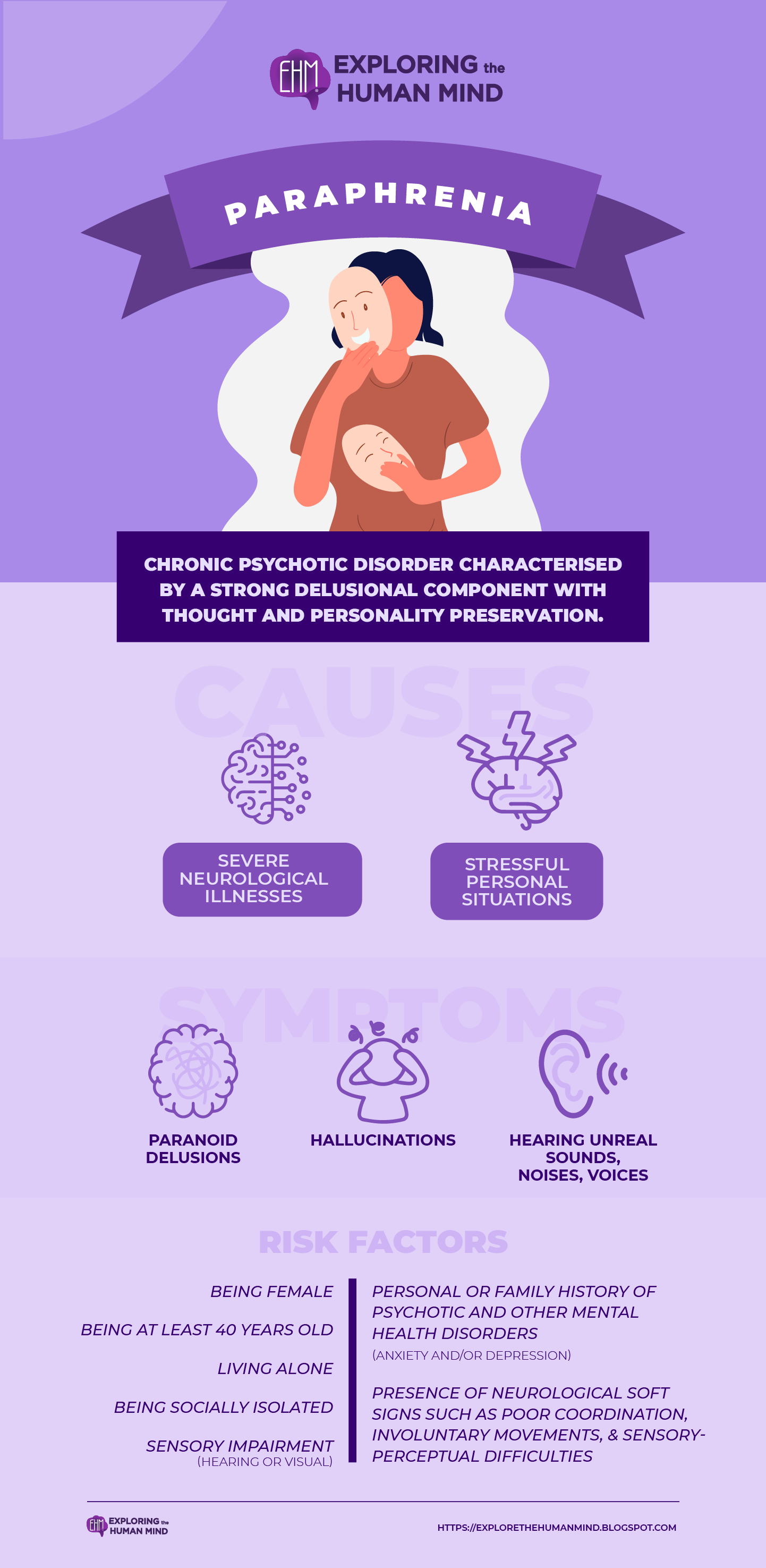Paraphrenia
Paraphrenia is a mental disorder characterised by hallucinations and paranoid delusions but with no impairment in cognitive abilities or daily functioning. It is one of the psychotic disorders, but it is not yet included in the DSM-5.
Paraphrenia is caused by neurological illnesses and stressful personal situations. This explains why this mental disorder typically affects elderly men and women. Paranoid delusions, hallucinations, and hearing voices and noises that other people do not hear are all symptoms of paraphrenia.
The prevalence rate is unknown, but it is thought that paraphrenia occurs only one-tenth as frequently as schizophrenia in an inpatient population.
Previously, the term paraphrenia was used to describe psychotic syndromes in the elderly. Late-onset schizophrenia or late-life psychosis are currently used terms to describe delusions and visual and auditory hallucinations that develop in later life. When compared to age-matched controls, late-onset cases have better preserved personality, less affective blunting, less formal thought disorder, more insight, and a lower excess of focal structural brain abnormalities and cognitive dysfunction.
Causes
Instead of being caused by a single factor, paraphrenia is caused by a combination of factors. The following are the causes of paraphrenia:
- Severe neurological illnesses
- Stressful personal situations

vectors by Freepick; graphic design by Vadot
Symptoms
Symptoms of paraphrenia are listed below:
- Paranoid delusions
- Hallucinations
- Hearing unreal sounds, noises, voices, and conversations
Risk Factors
- Being female
- Being at least 40 years old
- Living alone
- Being socially isolated
- Sensory impairment (especially hearing or visual)
- Personal or family history of psychotic and other mental health disorders including anxiety and/or depression
- Presence of neurological soft signs such as poor coordination, involuntary movements, and sensory-perceptual difficulties
Paraphrenia is usually caused by physical changes in the brain. That explains why the condition has been linked to dementia. It's also worth noting that certain medications, such as anticholinergics, steroids, psychostimulants, beta-blockers, and Parkinson's disease medications, can all contribute to psychotic symptoms.
Therapy and medications such as antipsychotics are used to treat paraphrenia. Because social isolation is a major issue that can lead to paraphrenia, it is critical to improve an individual's social functioning. Socialising has beneficial effects on the brain and improves one's quality of life.
Reference:
Andrade, F., Reis, C., Mota, M., & Salgado, H. M. (2023). Revisiting Paraphrenia: A Case Report. https://doi.org/10.7759/cureus.34391
Skoog, I. (2017). Specific Mental Health Disorders: Mental Disorders Associated with Aging. https://doi.org/10.1016/b978-0-12-803678-5.00427-6
Paraphrenia: definition, causes, symptoms, and treatments - The Diamond Rehab Thailand. (2019). The Diamond Rehab Thailand. https://diamondrehabthailand.com/what-is-paraphrenia/






Comments
Post a Comment